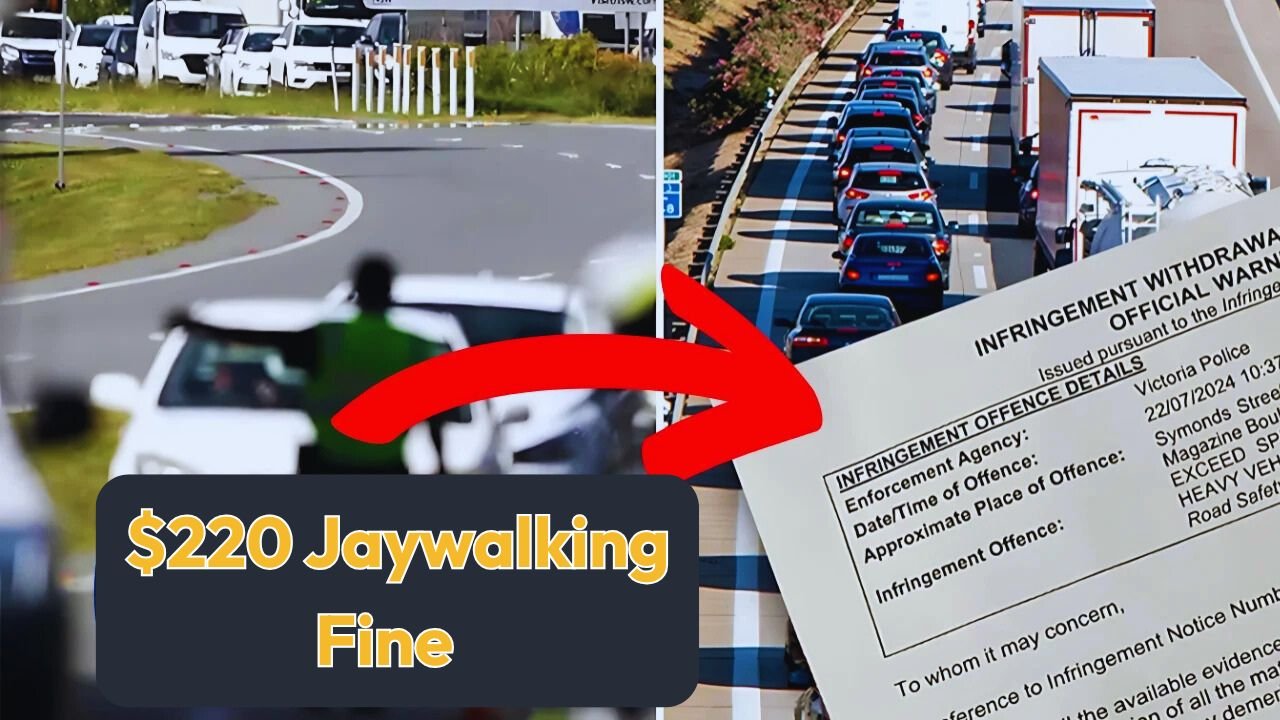Think jaywalking is no big deal? In Australia, it could cost you $220—or up to $2,200 if it goes to court. Many Aussies cross roads casually, unaware of these strict penalties aimed at boosting pedestrian safety. With new traffic rules rolling out in 2025, it’s time to get clued up. Here’s what you need to know to avoid a fine and stay safe.
What Exactly Is Jaywalking in Australia?
Jaywalking means crossing a road outside designated areas or against traffic signals. For example, crossing within 20 meters of a pedestrian signal without waiting for the green light is illegal. Lingering in the middle of a road or obstructing traffic also counts. Unlike some countries where jaywalking is overlooked, Australia enforces these rules to prevent accidents. 0
It’s not just a technicality—jaywalking contributes to pedestrian injuries and traffic chaos.
How Much Are Jaywalking Fines Across States?
Fines vary by state, with New South Wales hitting hardest at $220 on-the-spot. If you contest it and lose in court, penalties can soar. Here’s the breakdown:
| State | On-the-Spot Fine | Maximum Court Fine |
|---|---|---|
| New South Wales | $220 | $2,200 |
| Victoria | $102 | Varies |
| Queensland | $57 | Varies |
| Western Australia | $50 | Varies |
South Australia, Tasmania, and the ACT also enforce fines, though specific amounts depend on local laws. Always check signs near crossings. 0
Why Are Jaywalking Fines So Strict?
Pedestrian accidents are a serious issue, with over 4,000 injuries reported annually in Australia. Jaywalking increases risks for both walkers and drivers, especially in busy cities like Sydney or Melbourne. Police enforce these fines to promote safe habits and reduce collisions. Clear signage and crosswalks are there for a reason—use them. 0
Why Do Aussies Keep Jaywalking?
Many don’t realize jaywalking is a fineable offense. It’s often a habit—crossing the street to save a few seconds without spotting nearby signals. Social media buzz, like Yahoo News comments, shows surprise at the $220 fine, with some calling it overkill. But ignorance doesn’t excuse the law, and enforcement is ramping up in 2025. 0
How Are These Rules Enforced?
Police patrols and traffic cameras catch jaywalkers, especially in high-traffic areas. In NSW, on-the-spot fines are common, issued by officers or mailed after camera detection. Contesting a fine in court risks higher penalties if you’re found guilty. With new 2025 road safety pushes, expect stricter checks in urban hubs. 0
Tips to Avoid a Jaywalking Fine
Stick to marked crosswalks and wait for green signals. Avoid crossing within 20 meters of traffic lights unless using the designated path. If you’re in a rush, plan your route to hit crossings safely. Look for signs—they’re clear in most cities. Teaching kids these habits early also keeps everyone safer. 0
Public Opinion and Road Safety Impact
Some Aussies see jaywalking fines as harsh for a “minor” act, while others back them for saving lives. Pedestrian safety campaigns in 2025 aim to shift attitudes, emphasizing that small choices—like crossing correctly—prevent tragedies. These rules align with broader efforts, like phone-use fines, to make roads safer for all.
Final Thoughts
A $220 jaywalking fine can sting, especially if it escalates in court. With Australia tightening traffic laws in 2025, it’s worth rethinking casual road-crossing habits. Stick to crosswalks, watch for signals, and stay informed to avoid penalties and keep safe.
FAQ
What is the jaywalking fine in Australia?
Up to $220 on-the-spot in NSW; other states range from $50-$102. Court fines can hit $2,200.
What counts as jaywalking?
Crossing outside marked areas, against signals, or lingering in a way that obstructs traffic.
Why does Australia enforce jaywalking fines?
To reduce pedestrian accidents and improve road safety in busy areas.
Can a jaywalking fine go to court?
Yes, if contested or severe, with penalties up to $2,200 in NSW.
How can I avoid a jaywalking fine?
Use marked crosswalks, wait for green signals, and avoid crossing near traffic lights.




